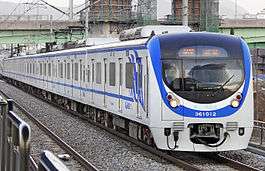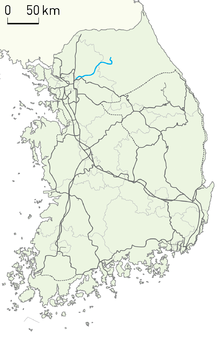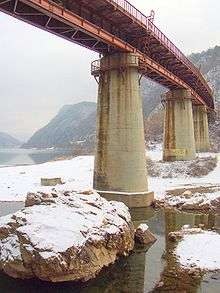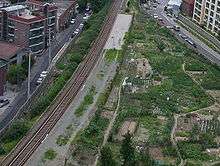Gyeongchun Line
| Gyeongchun Line | |||||||||||||||||||||||||||||||||||||||||||||||||||||||||||||||||||||||||||||||||||||||||||||||||||||||||||||||||||||||||||||||||||||||||||||||||||||||||||||||||||||||||||||||||||||||||||||||||||||||||||||||||||||||||||||||||||||||||||||||||||||||||||||||||||||||||||||||||||||||||||||||||||||||||||||||||||||||||||||||||||||||||||||||||||||||||||||||||||||||||||||||||||||||||||||||||||||||||||||||||||||||||||||||
|---|---|---|---|---|---|---|---|---|---|---|---|---|---|---|---|---|---|---|---|---|---|---|---|---|---|---|---|---|---|---|---|---|---|---|---|---|---|---|---|---|---|---|---|---|---|---|---|---|---|---|---|---|---|---|---|---|---|---|---|---|---|---|---|---|---|---|---|---|---|---|---|---|---|---|---|---|---|---|---|---|---|---|---|---|---|---|---|---|---|---|---|---|---|---|---|---|---|---|---|---|---|---|---|---|---|---|---|---|---|---|---|---|---|---|---|---|---|---|---|---|---|---|---|---|---|---|---|---|---|---|---|---|---|---|---|---|---|---|---|---|---|---|---|---|---|---|---|---|---|---|---|---|---|---|---|---|---|---|---|---|---|---|---|---|---|---|---|---|---|---|---|---|---|---|---|---|---|---|---|---|---|---|---|---|---|---|---|---|---|---|---|---|---|---|---|---|---|---|---|---|---|---|---|---|---|---|---|---|---|---|---|---|---|---|---|---|---|---|---|---|---|---|---|---|---|---|---|---|---|---|---|---|---|---|---|---|---|---|---|---|---|---|---|---|---|---|---|---|---|---|---|---|---|---|---|---|---|---|---|---|---|---|---|---|---|---|---|---|---|---|---|---|---|---|---|---|---|---|---|---|---|---|---|---|---|---|---|---|---|---|---|---|---|---|---|---|---|---|---|---|---|---|---|---|---|---|---|---|---|---|---|---|---|---|---|---|---|---|---|---|---|---|---|---|---|---|---|---|---|---|---|---|---|---|---|---|---|---|---|---|---|---|---|---|---|---|---|---|---|---|---|---|---|---|---|---|---|---|---|---|---|---|---|---|---|---|---|---|---|---|---|---|---|---|---|---|---|---|---|---|---|---|---|---|---|---|---|---|---|---|---|---|---|---|---|---|---|---|---|---|---|---|---|---|---|---|---|---|---|---|---|---|---|---|---|
|
| |||||||||||||||||||||||||||||||||||||||||||||||||||||||||||||||||||||||||||||||||||||||||||||||||||||||||||||||||||||||||||||||||||||||||||||||||||||||||||||||||||||||||||||||||||||||||||||||||||||||||||||||||||||||||||||||||||||||||||||||||||||||||||||||||||||||||||||||||||||||||||||||||||||||||||||||||||||||||||||||||||||||||||||||||||||||||||||||||||||||||||||||||||||||||||||||||||||||||||||||||||||||||||||||
 | |||||||||||||||||||||||||||||||||||||||||||||||||||||||||||||||||||||||||||||||||||||||||||||||||||||||||||||||||||||||||||||||||||||||||||||||||||||||||||||||||||||||||||||||||||||||||||||||||||||||||||||||||||||||||||||||||||||||||||||||||||||||||||||||||||||||||||||||||||||||||||||||||||||||||||||||||||||||||||||||||||||||||||||||||||||||||||||||||||||||||||||||||||||||||||||||||||||||||||||||||||||||||||||||
| Overview | |||||||||||||||||||||||||||||||||||||||||||||||||||||||||||||||||||||||||||||||||||||||||||||||||||||||||||||||||||||||||||||||||||||||||||||||||||||||||||||||||||||||||||||||||||||||||||||||||||||||||||||||||||||||||||||||||||||||||||||||||||||||||||||||||||||||||||||||||||||||||||||||||||||||||||||||||||||||||||||||||||||||||||||||||||||||||||||||||||||||||||||||||||||||||||||||||||||||||||||||||||||||||||||||
| Native name |
경춘선(京春線) Gyeongchunseon | ||||||||||||||||||||||||||||||||||||||||||||||||||||||||||||||||||||||||||||||||||||||||||||||||||||||||||||||||||||||||||||||||||||||||||||||||||||||||||||||||||||||||||||||||||||||||||||||||||||||||||||||||||||||||||||||||||||||||||||||||||||||||||||||||||||||||||||||||||||||||||||||||||||||||||||||||||||||||||||||||||||||||||||||||||||||||||||||||||||||||||||||||||||||||||||||||||||||||||||||||||||||||||||||
| Type |
Heavy rail, Passenger rail Commuter rail, Intercity rail | ||||||||||||||||||||||||||||||||||||||||||||||||||||||||||||||||||||||||||||||||||||||||||||||||||||||||||||||||||||||||||||||||||||||||||||||||||||||||||||||||||||||||||||||||||||||||||||||||||||||||||||||||||||||||||||||||||||||||||||||||||||||||||||||||||||||||||||||||||||||||||||||||||||||||||||||||||||||||||||||||||||||||||||||||||||||||||||||||||||||||||||||||||||||||||||||||||||||||||||||||||||||||||||||
| System | Seoul Metropolitan Subway | ||||||||||||||||||||||||||||||||||||||||||||||||||||||||||||||||||||||||||||||||||||||||||||||||||||||||||||||||||||||||||||||||||||||||||||||||||||||||||||||||||||||||||||||||||||||||||||||||||||||||||||||||||||||||||||||||||||||||||||||||||||||||||||||||||||||||||||||||||||||||||||||||||||||||||||||||||||||||||||||||||||||||||||||||||||||||||||||||||||||||||||||||||||||||||||||||||||||||||||||||||||||||||||||
| Status | Operational | ||||||||||||||||||||||||||||||||||||||||||||||||||||||||||||||||||||||||||||||||||||||||||||||||||||||||||||||||||||||||||||||||||||||||||||||||||||||||||||||||||||||||||||||||||||||||||||||||||||||||||||||||||||||||||||||||||||||||||||||||||||||||||||||||||||||||||||||||||||||||||||||||||||||||||||||||||||||||||||||||||||||||||||||||||||||||||||||||||||||||||||||||||||||||||||||||||||||||||||||||||||||||||||||
| Locale |
Seoul Gyeonggi Gangwon (South Korea) | ||||||||||||||||||||||||||||||||||||||||||||||||||||||||||||||||||||||||||||||||||||||||||||||||||||||||||||||||||||||||||||||||||||||||||||||||||||||||||||||||||||||||||||||||||||||||||||||||||||||||||||||||||||||||||||||||||||||||||||||||||||||||||||||||||||||||||||||||||||||||||||||||||||||||||||||||||||||||||||||||||||||||||||||||||||||||||||||||||||||||||||||||||||||||||||||||||||||||||||||||||||||||||||||
| Termini |
Mangu Chuncheon | ||||||||||||||||||||||||||||||||||||||||||||||||||||||||||||||||||||||||||||||||||||||||||||||||||||||||||||||||||||||||||||||||||||||||||||||||||||||||||||||||||||||||||||||||||||||||||||||||||||||||||||||||||||||||||||||||||||||||||||||||||||||||||||||||||||||||||||||||||||||||||||||||||||||||||||||||||||||||||||||||||||||||||||||||||||||||||||||||||||||||||||||||||||||||||||||||||||||||||||||||||||||||||||||
| Stations | 20 | ||||||||||||||||||||||||||||||||||||||||||||||||||||||||||||||||||||||||||||||||||||||||||||||||||||||||||||||||||||||||||||||||||||||||||||||||||||||||||||||||||||||||||||||||||||||||||||||||||||||||||||||||||||||||||||||||||||||||||||||||||||||||||||||||||||||||||||||||||||||||||||||||||||||||||||||||||||||||||||||||||||||||||||||||||||||||||||||||||||||||||||||||||||||||||||||||||||||||||||||||||||||||||||||
| Operation | |||||||||||||||||||||||||||||||||||||||||||||||||||||||||||||||||||||||||||||||||||||||||||||||||||||||||||||||||||||||||||||||||||||||||||||||||||||||||||||||||||||||||||||||||||||||||||||||||||||||||||||||||||||||||||||||||||||||||||||||||||||||||||||||||||||||||||||||||||||||||||||||||||||||||||||||||||||||||||||||||||||||||||||||||||||||||||||||||||||||||||||||||||||||||||||||||||||||||||||||||||||||||||||||
| Opened |
July 20, 1939 (original route) December 21, 2010 (realigned route) | ||||||||||||||||||||||||||||||||||||||||||||||||||||||||||||||||||||||||||||||||||||||||||||||||||||||||||||||||||||||||||||||||||||||||||||||||||||||||||||||||||||||||||||||||||||||||||||||||||||||||||||||||||||||||||||||||||||||||||||||||||||||||||||||||||||||||||||||||||||||||||||||||||||||||||||||||||||||||||||||||||||||||||||||||||||||||||||||||||||||||||||||||||||||||||||||||||||||||||||||||||||||||||||||
| Closed | December 20, 2010 (original route) | ||||||||||||||||||||||||||||||||||||||||||||||||||||||||||||||||||||||||||||||||||||||||||||||||||||||||||||||||||||||||||||||||||||||||||||||||||||||||||||||||||||||||||||||||||||||||||||||||||||||||||||||||||||||||||||||||||||||||||||||||||||||||||||||||||||||||||||||||||||||||||||||||||||||||||||||||||||||||||||||||||||||||||||||||||||||||||||||||||||||||||||||||||||||||||||||||||||||||||||||||||||||||||||||
| Owner | Korea Rail Network Authority | ||||||||||||||||||||||||||||||||||||||||||||||||||||||||||||||||||||||||||||||||||||||||||||||||||||||||||||||||||||||||||||||||||||||||||||||||||||||||||||||||||||||||||||||||||||||||||||||||||||||||||||||||||||||||||||||||||||||||||||||||||||||||||||||||||||||||||||||||||||||||||||||||||||||||||||||||||||||||||||||||||||||||||||||||||||||||||||||||||||||||||||||||||||||||||||||||||||||||||||||||||||||||||||||
| Operator(s) | Korail | ||||||||||||||||||||||||||||||||||||||||||||||||||||||||||||||||||||||||||||||||||||||||||||||||||||||||||||||||||||||||||||||||||||||||||||||||||||||||||||||||||||||||||||||||||||||||||||||||||||||||||||||||||||||||||||||||||||||||||||||||||||||||||||||||||||||||||||||||||||||||||||||||||||||||||||||||||||||||||||||||||||||||||||||||||||||||||||||||||||||||||||||||||||||||||||||||||||||||||||||||||||||||||||||
| Technical | |||||||||||||||||||||||||||||||||||||||||||||||||||||||||||||||||||||||||||||||||||||||||||||||||||||||||||||||||||||||||||||||||||||||||||||||||||||||||||||||||||||||||||||||||||||||||||||||||||||||||||||||||||||||||||||||||||||||||||||||||||||||||||||||||||||||||||||||||||||||||||||||||||||||||||||||||||||||||||||||||||||||||||||||||||||||||||||||||||||||||||||||||||||||||||||||||||||||||||||||||||||||||||||||
| Line length | 80.7 km (50.1 mi) | ||||||||||||||||||||||||||||||||||||||||||||||||||||||||||||||||||||||||||||||||||||||||||||||||||||||||||||||||||||||||||||||||||||||||||||||||||||||||||||||||||||||||||||||||||||||||||||||||||||||||||||||||||||||||||||||||||||||||||||||||||||||||||||||||||||||||||||||||||||||||||||||||||||||||||||||||||||||||||||||||||||||||||||||||||||||||||||||||||||||||||||||||||||||||||||||||||||||||||||||||||||||||||||||
| Number of tracks | Double track | ||||||||||||||||||||||||||||||||||||||||||||||||||||||||||||||||||||||||||||||||||||||||||||||||||||||||||||||||||||||||||||||||||||||||||||||||||||||||||||||||||||||||||||||||||||||||||||||||||||||||||||||||||||||||||||||||||||||||||||||||||||||||||||||||||||||||||||||||||||||||||||||||||||||||||||||||||||||||||||||||||||||||||||||||||||||||||||||||||||||||||||||||||||||||||||||||||||||||||||||||||||||||||||||
| Track gauge | 1,435 mm (4 ft 8 1⁄2 in) | ||||||||||||||||||||||||||||||||||||||||||||||||||||||||||||||||||||||||||||||||||||||||||||||||||||||||||||||||||||||||||||||||||||||||||||||||||||||||||||||||||||||||||||||||||||||||||||||||||||||||||||||||||||||||||||||||||||||||||||||||||||||||||||||||||||||||||||||||||||||||||||||||||||||||||||||||||||||||||||||||||||||||||||||||||||||||||||||||||||||||||||||||||||||||||||||||||||||||||||||||||||||||||||||
| Electrification | 25 kV/60 Hz AC catenary | ||||||||||||||||||||||||||||||||||||||||||||||||||||||||||||||||||||||||||||||||||||||||||||||||||||||||||||||||||||||||||||||||||||||||||||||||||||||||||||||||||||||||||||||||||||||||||||||||||||||||||||||||||||||||||||||||||||||||||||||||||||||||||||||||||||||||||||||||||||||||||||||||||||||||||||||||||||||||||||||||||||||||||||||||||||||||||||||||||||||||||||||||||||||||||||||||||||||||||||||||||||||||||||||
| |||||||||||||||||||||||||||||||||||||||||||||||||||||||||||||||||||||||||||||||||||||||||||||||||||||||||||||||||||||||||||||||||||||||||||||||||||||||||||||||||||||||||||||||||||||||||||||||||||||||||||||||||||||||||||||||||||||||||||||||||||||||||||||||||||||||||||||||||||||||||||||||||||||||||||||||||||||||||||||||||||||||||||||||||||||||||||||||||||||||||||||||||||||||||||||||||||||||||||||||||||||||||||||||
| Gyeongchun Line | |
 | |
| Korean name | |
|---|---|
| Hangul | 경춘선 |
| Hanja | 京春線 |
| Revised Romanization | Gyeongchun-seon |
| McCune–Reischauer | Kyŏngch'un sŏn |
The Gyeongchun Line is a regional rail line between Seoul and Chuncheon operated by Korail. The name of the line is derived from Gyeong (京, meaning the capital, Seoul) and Chuncheon. The line was reconstructed in a new alignment in its entirety in the 2000s. Rail service operates between Sangbong Station on the Jungang Line in eastern Seoul and Chuncheon Station as part of the Seoul Metropolitan Subway system since December 21, 2010. A class of regional rail service named ITX-Cheongchun began operations on February 28, 2012, linking Chuncheon to Cheongnyangni and Yongsan Stations.
History

The original Gyeongchun Line was opened along its full length of 87.3 km (54.2 mi) between Seongbuk on the Gyeongwon Line to Chuncheon by the privately owned Gyeongchun Railway on 20 July 1939.[1][2] Chuncheon was the most popular destination for students on orientation trips, bringing passengers to the line.[3] Following the Liberation of Korea, all railways, including the Gyeongchun Railway, were nationalised.
Upgrade
The line was upgraded into an electrified and double-tracked line for 180 km/h (112 mph).[3][4][5] Between Geumgok and Chuncheon, from 1997 until 2010, the line was re-laid in a straighter, 64.2 km long alignment with a budget of 2.151,931 billion won.[6] The remaining 17.9 km of the upgraded line was built with a separate budget of 574.124 billion won.[7] Towards Seoul, after Toegyewon Station, this section of the new line diverges from the old alignment that ended in Seongbuk, and connects to the Jungang Line at Mangu Station.[7]
The new alignment was originally planned to be opened in 2004, but completion of the works was delayed for various reasons, including lack of funds.[5] The complete new alignment opened and the old one closed on December 21, 2010.[3]
On September 1, 2010, the South Korean government announced a strategic plan to reduce travel times from Seoul to 95% of the country to under 2 hours by 2020. As part of the plan, the Gyeongchun Line is to be further upgraded for 230 km/h and may see KTX service.[8] For the longer term, the government also considers to build a parallel high-speed line that would continue beyond Chuncheon to Sokcho on South Korea's east coast.[8]
On November 4, 2016, two trains (one in the morning, one in the night) were added to the line. These trains run to and from Kwangwoon University Station, allowing for transfers to Line 1.
On September 26, 2016, the line was extended to Cheongnyangni Station to improve access to regional trains at the station. However, only 10 trains in each direction travel past Sangbong Station; the majority of the trains still terminate at Sangbong Station, and the two special rush-hour trains still run to and from Kwangwoon University Station.[9]
Services
When the new Gyeongchun Line opened on December 21, 2010, passenger service was integrated into the Seoul Metropolitan Subway system, bringing that system from Seoul all the way into Gangwon-do.[3] The new service reduced travel time between Chuncheon and Sangbong in Seoul from two hours to 89 minutes, with different trains operating according to different stopping patterns; and increased capacity five-fold.[3] Compared to the previous Mugunghwa-ho train service on the Gyeongchun Line, fares dropped by half.[3] For the service, Hyundai Rotem supplied Korail with fifteen eight-car Class 361000 EMU trains, out of which only thirteen trains remain in service on the line today, and one train pending re-entry into service.
On February 28, 2012, Korail introduced ITX service (Intercity Train EXpress), which uses Class 368000 trains with double-deck cars. From Chuncheon Station, the fastest ITX trains take 52 minutes to Cheongnyangni Station, and 68 minutes to Yongsan Station in Seoul, operating at a maximum speed of 180 km/h (112 mph).[5][10] The base fare is 9800 won between Chuncheon and Yongsan, currently it has a 30% discount. The express service was phased out along with the advent of the ITX service, but was brought back in early 2017.
Stations
Current Services
Service via the Gyeongui-Jungang Line
The following stations are along the Gyeongui-Jungang Line.

| Station number |
Station name | ITX | Local | Transfer | Line name |
Station dist. |
Total dist. |
Location | |||||
|---|---|---|---|---|---|---|---|---|---|---|---|---|---|
| Romanized | Hangul | Hanja | in km | ||||||||||
| K110 | Yongsan | 용산 | 龍山 | ● | No service | Gyeongwon Line |
— | −12.7 | Seoul | Yongsan-gu | |||
| K114 | Oksu | 옥수 | 玉水 | ▲ | 7.1 | −5.6 | Seongdong-gu | ||||||
| K116 | Wangsimni | 왕십리 | 往十里 | ▲ | 3.2 | −2.4 | |||||||
| K117 | Cheongnyangni | 청량리 | 淸凉里 | ● | ♢ | 2.4 | 0 | Dongdaemun-gu | |||||
| K118 | Hoegi | 회기 | 回基 | ♢ | Jungang Line |
1.4 | 1.4 | ||||||
| K119 | Jungnang | 중랑 | 中浪 | ♢ | 1.8 | 3.2 | Jungnang-gu | ||||||
| Line continues to Sangbong Station | |||||||||||||
| The negative sign is only a convention for distance notation, from Cheongnyangni Station. | |||||||||||||
Current Alignment (opened December 21, 2010)
| Station number |
Station name | Express | ITX | Local | Transfer | Line name |
Station dist. |
Total dist. |
Location | |||
|---|---|---|---|---|---|---|---|---|---|---|---|---|
| Romanized | Hangul | Hanja | in km | |||||||||
| 119 | Kwangwoon University |
광운대 | 光云大 | ▲ | No service | No service | Mangu Line |
— | Seoul | Nowon -gu | ||
| K120 | Sangbong | 상봉 | 上鳳 | ● | ▲ | ● | 4.3 | 0.0 | Jungnang -gu | |||
| K121 | Mangu | 망우 | 忘憂 | ● | Gyeongui–Jungang | 0.6 | 0.6 | |||||
| P122 | Sinnae | 신내 | 新內 | ● | (TBD) |
Gyeongchun Line |
2.1 | 2.7 | ||||
| P123 | Galmae | 갈매 | 葛梅 | ● | 2.6 | 5.3 | Gyeonggi -do |
Guri-si | ||||
| P124 | Byeollae | 별내 | 別內 | ● | (2022) |
1.4 | 6.7 | Namyangju -si | ||||
| P125 | Toegyewon | 퇴계원 | 退溪院 | ● | ▲ | ● | 1.6 | 8.3 | ||||
| P126 | Sareung | 사릉 | 思陵 | ● | ▲ | ● | 3.3 | 11.6 | ||||
| P127 | Geumgok | 금곡 | 金谷 | ● | 3.6 | 15.2 | ||||||
| P128 | Pyeongnae –Hopyeong |
평내호평 | 坪內好坪 | ● | ♢ | ● | 4.0 | 19.2 | ||||
| P129 | Cheonmasan | 천마산 | 天摩山 | ● | 4.2 | 23.4 | ||||||
| P130 | Maseok | 마석 | 磨石 | ● | ▲ | ● | 2.2 | 25.6 | ||||
| P131 | Daeseong-ri | 대성리 | 大成里 | ● | 7.4 | 33.0 | Gapyeong -gun | |||||
| P132 | Cheongpyeong | 청평 | 淸平 | ● | ♢ | ● | 7.5 | 40.5 | ||||
| P133 | Sangcheon | 상천 | 上泉 | ● | 4.8 | 45.3 | ||||||
| P134 | Gapyeong | 가평 | 加平 | ● | ● | ● | 7.1 | 52.4 | ||||
| P135 | Gulbongsan | 굴봉산 | 屈峰山 | ● | 4.7 | 57.1 | Gangwon -do |
Chuncheon -si | ||||
| P136 | Baegyang-ri | 백양리 | 白楊里 | ● | 2.9 | 60.0 | ||||||
| P137 | Gangchon | 강촌 | 江村 | ● | ♢ | ● | 5.3 | 65.3 | ||||
| P138 | Gimyujeong | 김유정 | 金裕貞 | ● | 7.4 | 72.7 | ||||||
| P139 | Namchuncheon | 남춘천 | 南春川 | ● | ● | ● | 5.9 | 78.6 | ||||
| P140 | Chuncheon | 춘천 | 春川 | ● | ● | ● | 2.7 | 81.3 | ||||
ITX: Intercity Train Express Cheongchun
| ||||||||||||

Former alignment
| Station name | Connecting services | Station type | ||
|---|---|---|---|---|
| Romanized | Hangul | Hanja | ||
| Seongbuk | 성북 | 城北 | Aboveground | |
| Singongdeok | 신공덕 | 新孔德 | Aboveground | |
| Hwarangdae | 화랑대 | 花郞臺 | Aboveground | |
| Toegyewon | 퇴계원 | 退溪院 | Aboveground | |
| Sareung | 사릉 | 思陵 | Aboveground | |
| Geumgok | 금곡 | 金谷 | Aboveground | |
| Pyeongnae–Hopyeong | 평내호평 | 坪內好坪 | Aboveground | |
| Maseok | 마석 | 磨石 | Aboveground | |
| Daeseong-ri | 대성리 | 大成里 | Aboveground | |
| Cheongpyeong | 청평 | 淸平 | Aboveground | |
| Sangcheon | 상천 | 上泉 | Aboveground | |
| Gapyeong | 가평 | 加平 | Aboveground | |
| Gyeonggang (Gulbongsan) | 굴봉산 | 屈峰山 | Aboveground | |
| Baegyang-ri | 백양리 | 白楊里 | Aboveground | |
| Gangchon | 강촌 | 江村 | Aboveground | |
| Gimyujeong | 김유정 | 金裕貞 | Aboveground | |
| Namchuncheon | 남춘천 | 南春川 | Aboveground | |
| Chuncheon | 춘천 | 春川 | Aboveground | |
See also
| Wikimedia Commons has media related to Gyeongchun Line. |
References
- ↑ "경영원칙 - 경영공시 - 영업현황 - 영업거리현황". Korail. Archived from the original on 2011-07-22. Retrieved 2010-12-04.
- ↑ 私設鉄道運輸開始, 朝鮮総督府官報(The Public Journal of the Governor-General of Korea) Showa Nr. 3754, 26 July 1939
- 1 2 3 4 5 6 "Historic railway line chugs on into history". JoongAng Daily. 2010-12-09. Retrieved 2010-12-16.
- ↑ "Korea's railways face a bright future". International Railway Journal. 2008-07-01. Archived from the original on 2009-04-16. Retrieved 2010-08-29.
- 1 2 3 "South Korea's growing network". Railway Gazette International. 2008-09-08. Retrieved 2010-08-29.
- ↑ "경춘선 복선전철". Korea Rail Network Authority. Retrieved 2010-10-24.
- 1 2 "망우∼금곡 복선전철". Korea Rail Network Authority. Retrieved 2010-10-24.
- 1 2 "Bullet trains coming to a town near you by 2020". JoongAng Daily. 2010-09-02. Retrieved 2010-10-27.
- ↑ "Archived copy". Archived from the original on 2017-02-10. Retrieved 2016-12-02.
- ↑ loveaselin (9 September 2011). "[Full HD] 경춘선 좌석급행 2층열차 / Gyeongchun Line's new trains coming" – via YouTube.